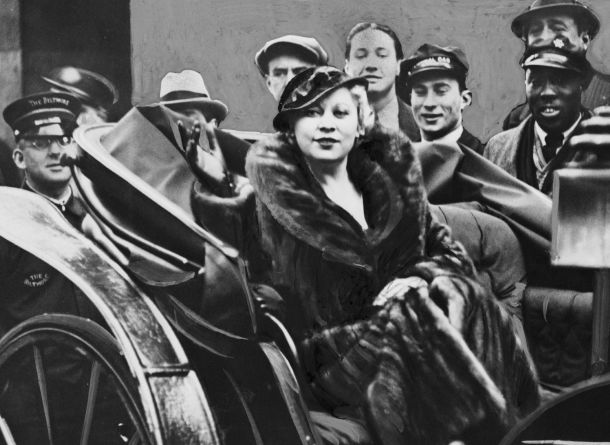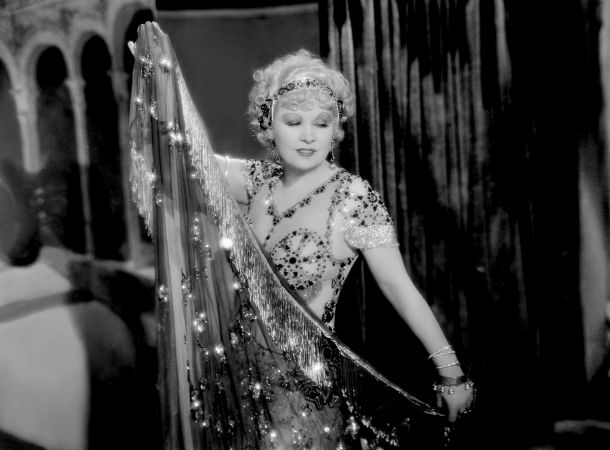Mae West was a master of constructing her persona from head to toe. Wherever she went, she arrived fully dressed in the most lavish of ensembles. West boldly cultivated beauty, embracing an aesthetic that did not reflect trends, but her own discerning taste. “I think she got her style from the Edwardian era of Europe,” said André Leon Talley, a former editor at Vogue Magazine, in the film American Masters–Mae West: Dirty Blonde. “It was always a long gown, a portrait hat, and beautiful accessories. And the walk, the attitude…the power walk is just unique in the history of modern film making.”
Here are some pearls of wisdom from West’s extravagant legacy:
Quality Matters
West had impeccable taste, and quality was important to her. She adorned herself with silks and furs of the highest caliber. When West was sentenced to ten days in jail for obscenity in her play “Sex,” she only had one complaint: the uniforms. In her autobiography “Goodness Had Nothing to Do with it,” she wrote:
“I objected to the underwear they gave me at the Island. It was rough on the body. ‘I want to wear my silk underwear.’ ‘This ain’ Saks Fifth Avenue,’ said a toothless old hag.”
Trends Come and Go, Style is Forever
At the height of her Hollywood film career in the 1920s and 30s, West eschewed the popular androgynous and waifish look of the era in favor of the more extravagant styles of the 1890s. Full-length gowns, hats with ostrich plumes, and feminine silhouettes suited West’s discerning taste. West knew that the refined costumes of the period would help her gain the attention of female theater-goers and boost her reputation. In the American Masters film on West’s life, historian and author Marybeth Hamilton talked about the success of West’s 1927 play set in the 1890s, “Diamond Lil”:
“She’s wearing these amazing, ornate floor length hourglass corseted gowns. All of a sudden they’re not talking about her in terms of sleaze anymore, they’re talking about her in terms of glamour.”

Mae West in her first screen role in Night After Night, 1932. Photo: Irving Lippman/John Kobal Foundation/Getty Images.
More is More
West was no minimalist. On every occasion, she showed up perfectly coiffed. Her meticulously curated sense of style was celebrated in her films as well as in her everyday life. Despite her sultry one-liners, West’s extravagant style was refined and never sleazy.
“…everything about her is overkill,” Andre Leon Talley, the former Vogue Editor, has explained. “Overkill in jewelry, overkill in diamonds. But it manages to look incredible. The way she walked across the stage in a portrait hat with plumes. Even when she’s undressed, she’s dressed. She’s not sitting around there in a nude chiffon chemise, she’s still laced up. Those clothes were not vulgar.”














